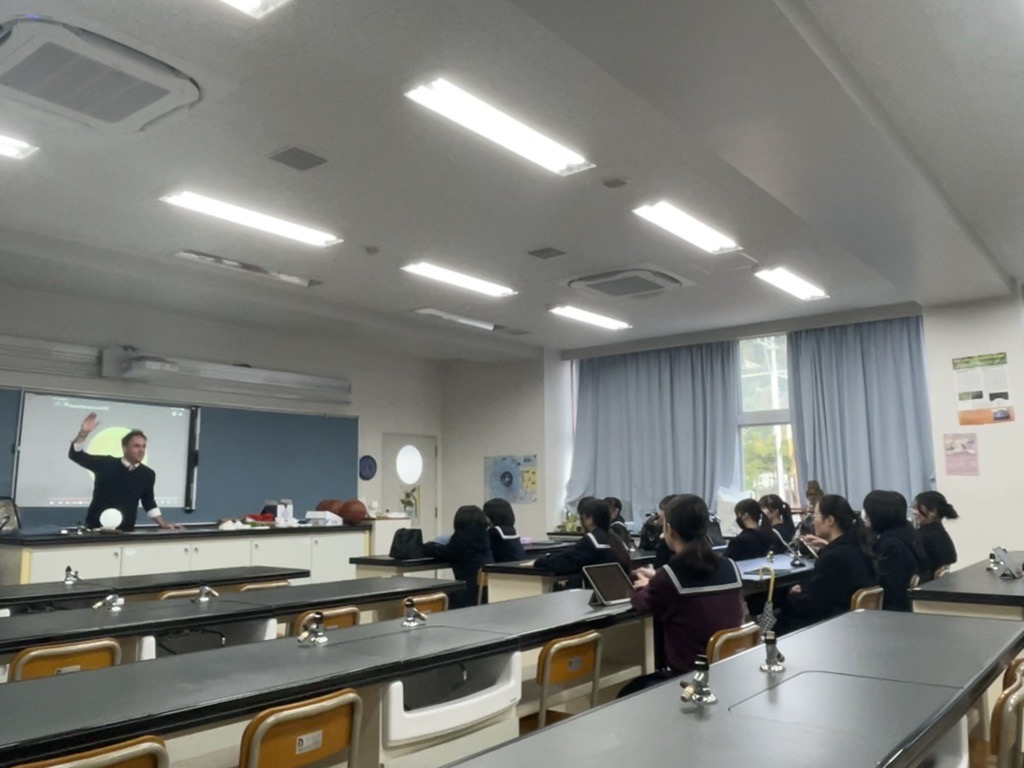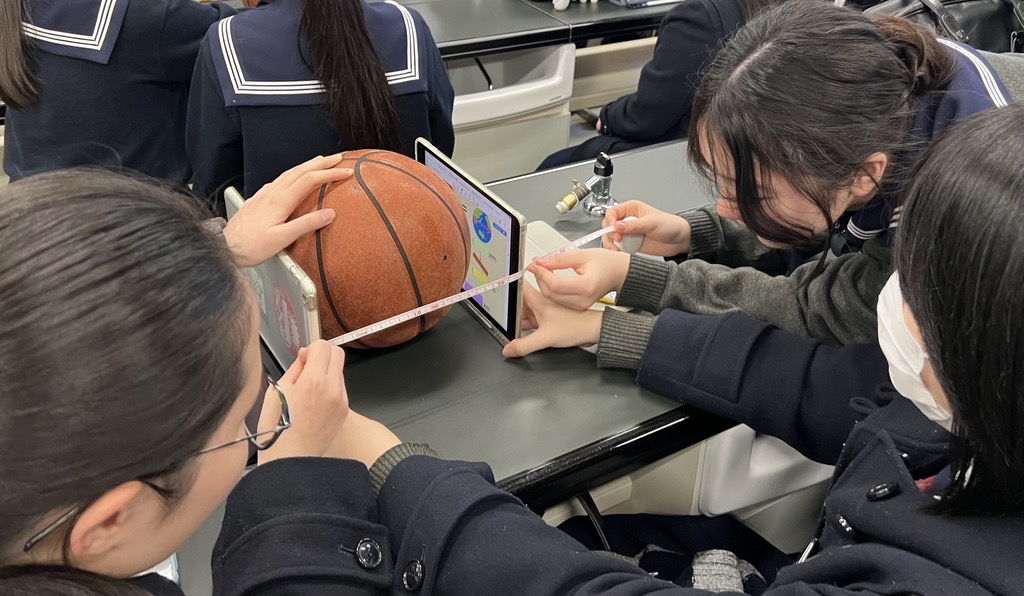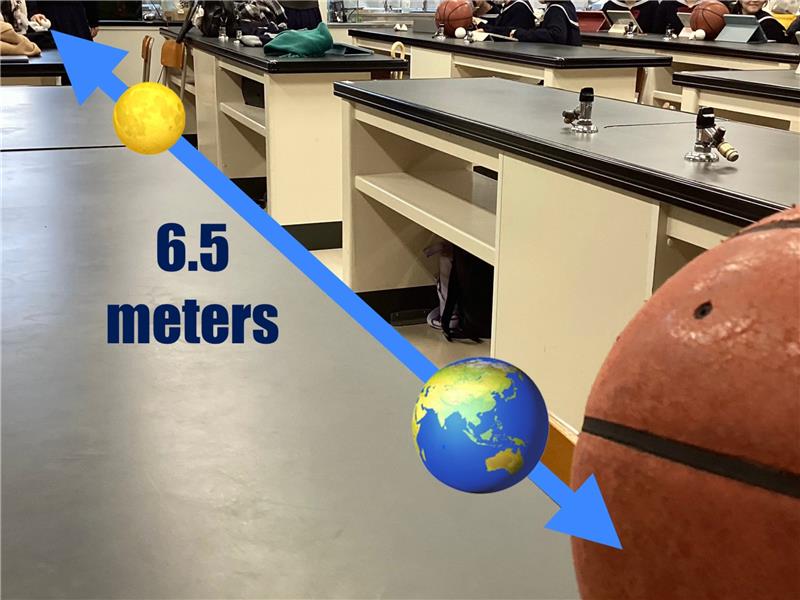
先週の水曜日放課後、CJ-STEAMの一環として、Amos先生による月の講義が行われました。
すべて英語で行われ、希望生徒のみの参加でしたが20名程度集まり、地球と月の距離を計算したりなど盛りだくさんの講義となりました。


以下、講義の概要とAmos先生からのメッセージです。
Explorer 1: TerraLuna
Overview
On Wednesday January 15th, I held a special introductory class for interested students on The Moon, on some of its properties and what a future of humans living on the moon might look like.
For the lesson, I provided a variety of geological samples of the kinds of rocks and minerals students might find if they were walking (or jumping) around on the Moon, and we explored what resources we would need to make the moon a habitable place in the future.
In this lesson held entirely English, students were first asked to calculate the correct distance between a basketball-sized earth and a tennis ball-sized Moon. They were then asked to select the best place to land on the near-side of moon and give reasons in English for their choices. They went about this by first familiarizing themselves with what resources would be most important for people living on the moon, and then studying geological maps of where on the moon these resources could be found.
It is my hope that this lesson will form part of an ‘Explorer’ series of classes which will aim to take students to different places and times and encourage them to think about what is possible in our world and marvel at our capability for ingenuity and our ability to keep pushing back the boundaries of what we know and understand about the Universe.



